The American bulldog is a strong, athletic bully breed. This dog is goofy and stubborn, and he loves to play. The breed is also known as the “Ambull,” and is descended from the Old English bulldog. The AKC does not recognize the American bulldog as a breed, but this dog is well-known and well-loved in the U.S. regardless. Read on to learn more about the American bulldog.
Owning an American Bulldog?
Having an American Bulldog can bring a lot of joy to your life, and keeping your dog comfy and healthy is essential to a happy relationship.
With so many different dog products, our expert trainers often see dog owners use the wrong things (ie. collars) on their Bulldogs. In the spirit of promoting animal happiness, our certified dog trainer, Marina Somma, has hand-picked a American Bulldog Care Kit to best fit your American Bulldog.
Description of the American Bulldog
The American bulldog is a leggy, block-headed dog with a gaping smile. Though this breed is related to American Staffordshire terriers and other pit bull-type dogs, they are not the same. The Ambull typically has a broader chest and longer legs than a pit bull. These dogs share the strength and intensity of other bully breeds.
The American bulldog came to the U.S. with immigrants, as a working dog for farms. This breed was used for hunting hogs and all-around farm work. The breed nearly went extinct around the end of World War II, but were saved by a few breeders who scoured the southern U.S. for remaining dogs to breed.
The Ambull has largely left behind his days as a working dog and is mostly a family pet. This breed is known for an exuberant play style, and love of activity. While these dogs are loyal pets, they are not always friendly with strange dogs or people. They require careful and training and socialization thanks to this tendency.
Life Expectancy and Size
Since the American bulldog is a less-regulated breed, there is more variety in the size and life expectancy than in some other dog breeds. These dogs can range from 20 to 28 inches tall at the shoulder, and they may weigh as little as 60 pounds, or as much as 120 pounds.
This breed also varies in life expectancy. While some Ambulls may only live to be about 10 years old, others live well into their teens, making it to 16 or so.
Protective Ability
This breed is a big deterrent to intruders, based on bulk alone. With a broad chest and big head, the American bulldog provides an imposing silhouette. They love tug-o-war, and are relatively easily trained in protection sports like French Ring, IPO, and Schuntzhund. These dogs are also relatively suspicious of strangers and unwelcoming to guests, making them likely to bark or charge at intruders.
All of this comes together to make the American bulldog a natural choice for people looking for a guard dog.
That said, this breed’s natural instinct to ward off intruders can easily backfire. These dogs require careful training and socialization to ensure that they’re accepting of invited guests, the veterinarian, and strangers on the street.
Training
This breed has a stubborn streak a mile wide, making training difficult for inexperienced owners. They are bred to fight bulls and hunt boar, so many corrective training techniques have little affect on them. They respond far better to treat- or toy-based training.
A skilled trainer will be able to shape an American bulldog’s behavior using rewards, making the dog think that behaving well was his idea in the first place. Making training into a fun game is one of the best ways to circumvent this breed’s tendency towards stubbornness.
This breed is athletic and intelligent, and can excel at nearly any dog sport under the sun. They are particularly popular in protection sports such as French Ring, IPO, and Schuntzhund.
Energy Level
The American bulldog is an athlete, first and foremost. They have a lot of energy, and will need daily exercise that is far more extensive than a walk around the neighborhood. Owners with full-time jobs should supplement daily exercise with puzzle feeders instead of food bowls, to help exercise their dog’s mind and body while they’re at work.
A successful Ambull owner will give their dog a variety of activities each week, including jogs, hikes, flirt pole games, tug-o-war, and training games. A flirt pole, which is similar to a fishing pole with a squeaky toy at the end, is one of the best ways to exercise an American bulldog with limited space.
This breed does not do well if simply left in the back yard. Doing so will quickly turn your would-be guard dog and companion into a destructive force, prone to a variety of behavior problems related to pent-up energy.
What Living with a American Bulldog is Like
The American bulldog is a tenacious go-getter. These dogs are goofy and loving with their owners – many are famously fond of butt scratches. They love being around their people, and do poorly with spare time on their paws.
Experienced owners will love working with these challenging, high-energy dogs. Expect to be taken for walks or jogs and asked to play tug. These dogs are also quite physical, and may enjoy wrestling and body-slamming in the name of fun. This means that they require careful training to keep children or frail adults safe around them.
Some American bulldogs are friendly with everything that moves, but others are not. Many owners have to balance their dog’s boundless energy with his prey drive or unfriendliness towards other dogs. They are not always good candidates for dog parks or off-leash hiking, thanks to these tendencies.
This breed can do well with older children who understand dog body language, but can be far too physical for younger children, or children unfamiliar with dogs.
Care of the American Bulldog
What this breed requires in energy and training is thankfully offset with low grooming needs. They are relatively hardy and low-maintenance, as long as their mental and physical exercise are taken care of.
Environmental Needs
Short-nosed individuals within this breed are vulnerable to heat and humidity. However, individuals with longer muzzles are quite adaptable to most temperatures. These dogs have a short, tight coat that doesn’t help much in extreme cold. They can be quite front-heavy, making some American bulldogs poor swimmers. Overall, most of these dogs are quite hardy in most environments.
Exercise Needs
The American bulldog is an athlete, no way around it. This breed requires daily, intensive energy outlets to stay happy and healthy. While this breed does better in homes with yards, a romp in the back yard is not enough exercise for these dogs. They were bred to help on the farm from dawn till dusk, or go on long hunting expeditions.
Keep that history in mind when considering adopting or purchasing an American bulldog. These dogs will need at least an hour of rigorous exercise most days. If you don’t have time or energy for that, skip over this breed and look elsewhere for your next dog.
Shedding and Grooming
The short coat of this breed does not get tangled, but does shed. Expect mild to moderate shedding year-round with this breed. Weekly brushing will help keep the shedding under control. Regular baths, nail trims, and ear cleaning will also keep your dog looking (and feeling) his best.
Ideal Home Environment
The American bulldog does best in an active home with an experienced owner. They require extensive socialization and training to ensure that they’re comfortable with strangers. While a yard is a great addition to any dog-owning home, these dogs definitely benefit from the space!
American bulldogs do best with owners who can dedicate at least an hour per day to exercise, enrichment, and training. They don’t need much in the way of grooming, but otherwise are not an easy dog for inexperienced owners.
Due to their strength, size, and tendency to roughhouse, these dogs are not the best choice for homes with small children or elderly relatives.
Health Concerns
These dogs vary widely in their health status. Since the Ambull is bred largely for things other than looks, they tend to be a bit healthier than some other breeds. These dogs are vulnerable to hypothyroidism and cataracts.
They are also susceptible to joint issues, such as hip and elbow dysplasia. The risk of joint issues rises sharply if they are poorly bred, or allowed to be overweight. Ask your breeder about health history for your puppy’s parents and relatives. If they don’t have this, walk away.
Behavior Problems
This breed can range from outgoing and goofy, to downright scary around unfamiliar people and dogs. Aggression and over-arousal are two of the most common behavior problems in these dogs. As with all dogs, early socialization and reward-based training are the best ways to avoid and treat any aggression issues.
Focus on teaching your new Ambull to calmly ignore other dogs and people. Focus on polite and calm interactions, rather than encouraging friendly greetings. This will avoid issues related to overly-excited greeting and aggression. If you already have a behavior problem in your American bulldog, speak to a Certified Dog Behavior Consultant. These behavior specialists are far more qualified to work with aggressive dogs than your local obedience trainer.
Avoid hyper-arousal by properly exercising your dog, as well as teaching him how to calm down. Teaching him to lie on his mat and relax when guests are over is a good way to prevent and treat the problem. If you’ve met his exercise needs, you start teaching him how to properly interact with guests and dogs.
If your dog is aggressive towards other dogs, contact a Certified Dog Behavior Consultant. This problem is complex to deal with, and often relies on managing the problem heavily, since it’s difficult to control the behavior of other dogs during training.

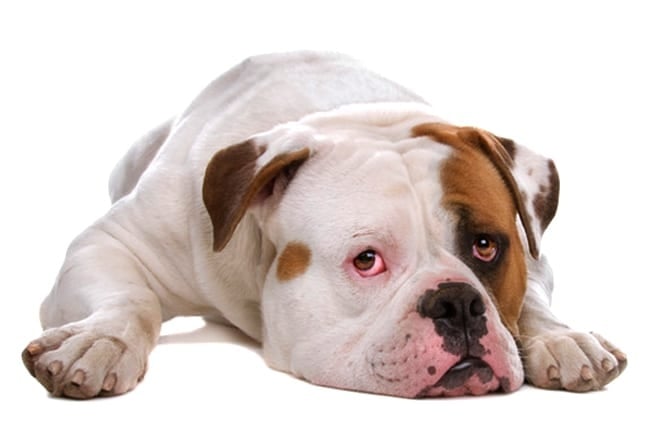

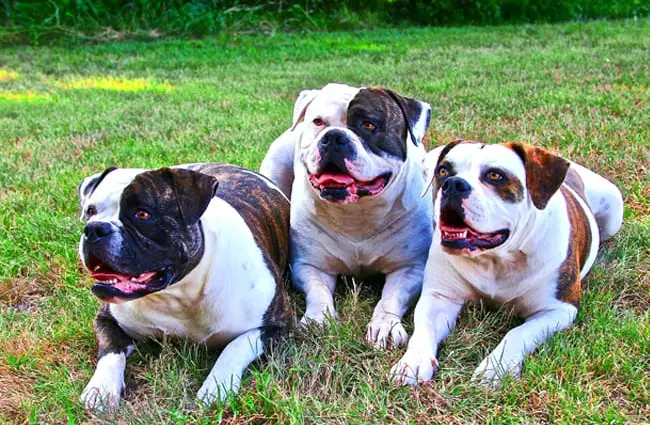
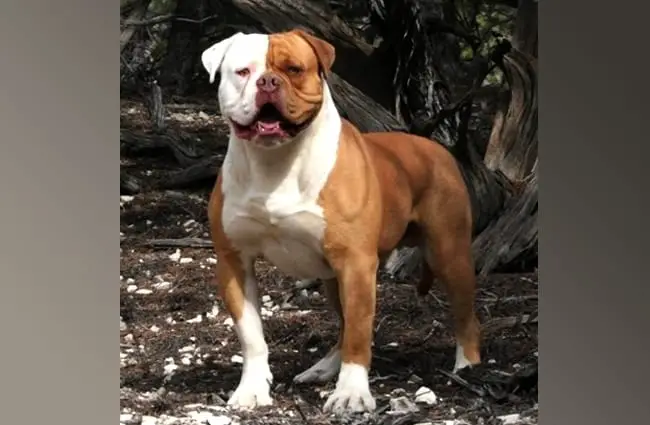
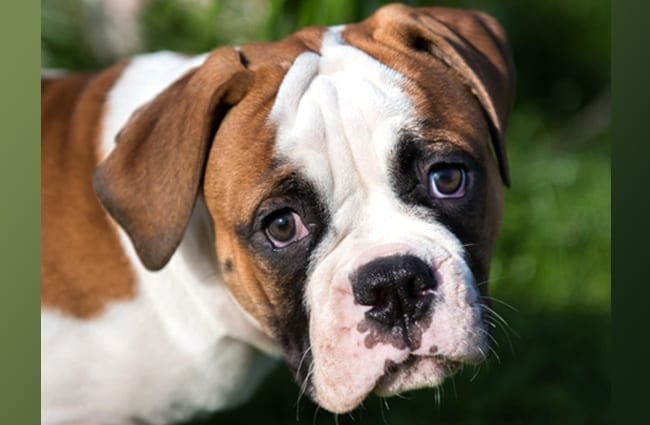




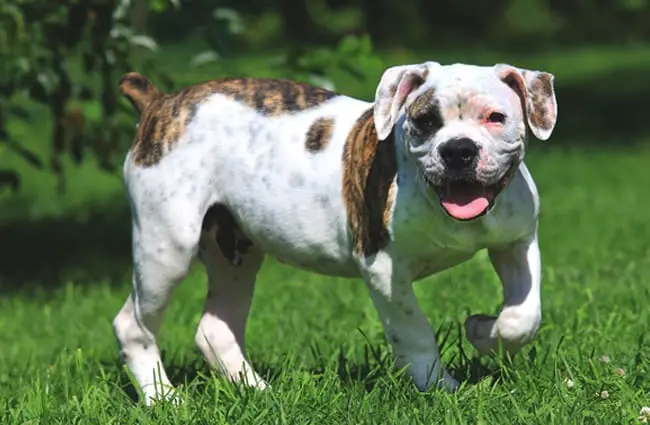
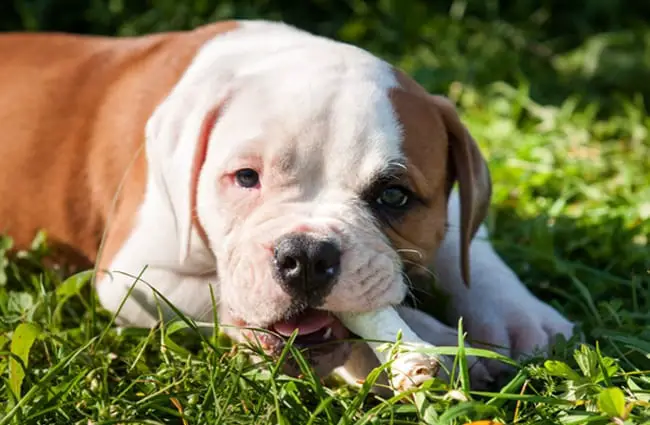
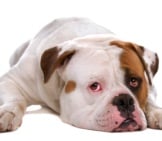

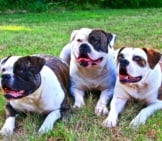

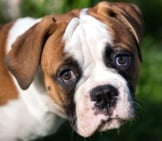

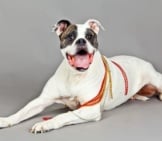
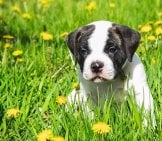

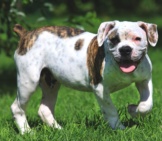














![Red Angus Closeup of a beautiful Red Angus cowPhoto by: U.S. Department of Agriculture [pubic domain]https://creativecommons.org/licenses/by/2.0/](https://animals.net/wp-content/uploads/2020/03/Red-Angus-4-100x75.jpg)

